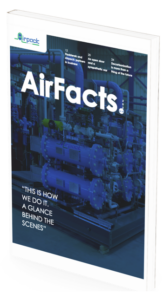Biomass and biogas – From biomass to biogas
Looking to explore the world of biogas processing and handling solutions? Get instant access to our documents about biogas technology.
Biogas from Biomass
According to the United States Energy Information Agency (EIA), the consumption of energy is expected to grow more slowly in the next three decades than in years past. EIA credits efficiency for this projected deceleration. Meanwhile, more electricity is generated from renewable sources than ever before. This is good news for those concerned about energy independence and the environmental effects of fossil fuel combustion. Although solar panels and wind turbines get the most media attention whenever energy usage comes up, the unsung heroes of renewable power are biomass and biogas. Not only are they usable for electricity generation, they also improve the sometimes frustrating process of waste management.
What Exactly Is Biomass?
Breaking down the word, biomass is stuff derived from living — or once living — organisms. It contains accumulated chemical energy from the sun. This encompasses diverse forms of matter: firewood, wood chips, lumber and sawdust; agricultural crops, wild plants, algae and grass clippings; solid wastes found in garbage like paper, fabrics and discarded food by-products; as well as livestock manure and sewage. Anything that traces its origins to living flora or fauna can count as biomass. In fact, this is not a new renewable at all. Prior to the Industrial Revolution, it was the primary fuel source for heating and cooking. Today, however, the efficient conversion of biomass to biogas enables significant electricity production.
How Does Biogas Relate to Biomass?
Under the right conditions, biomass serves as a factory for biogas. Of course, food scraps in your kitchen waste basket do not spawn usable biogas. Yet if you deprive those scraps of oxygen, as in a landfill, you set the stage for bio-chemical activity that does release biomass gas. This is why septic tank technicians and sewer workers must wear protective apparatus to do certain jobs — the raw gas emitted can be dangerous to their health. What happens in the conversion of biomass to biogas? A course of reactions proceeds; this sequence is called anaerobic digestion.
Biogas Production from Biomass: The Process of Anaerobic Digestion
Anaerobic digestion begins with the biomass itself. Some forms are more “digestible,” i.e. easier to extract biogas from, than others. This is akin to human digestion, where highly fibrous foods — like raw vegetables — take longer for the nutrients to enter the cells. Whatever the processing challenges, the biomass is often referred to as substrate. The first step is to house the substrate in an oxygen-free environment. Only in the absence of oxygen can the essential decomposition take place. Some substrate is pre-treated to make it more digestible.
As with the bottom of a compost heap or the depths of a landfill, in an engineered digester, bacteria begin to break down organic matter, converting components to various compounds and elements. Finally, biogas production from waste is achieved when methane (CH4) and carbon dioxide (CO2) are released in these reactions. Hence, the relationship between biomass and biogas involves several degrees od separation. Nevertheless, the latter can not be collected without the former.
What Happens to Biogas after Collection?
More often than not, energy from biomass and biogas is employed to generate electricity. This energy can power a particular facility, like a farm, or it can have more regional applications, i.e. for use by a public utility. In most cases, the biogas fuels a combustion engine which, in turn, creates mechanical energy that powers electrical generators. Sometimes, biogas goes directly from digestion into heaters and boilers that would otherwise require propane gas. Alternatively, it is further refined for transportation use by a local gas utility. Excess biomass burning gases are flared into the atmosphere. There is some competition in terms of biomass vs natural gas.
Are All Anaerobic Digesters the Same?
As noted, anaerobic digestion can occur in nature. Yet humanity has found ways to harness the biogas it produces. Biomass gas generator technology is amazingly diverse. Digesters vary according to the volume of substrate and the purpose of the methane production from biomass.
- Covered anaerobic lagoon digesters — are made airtight with a supple covering. Consisting of one or two cells, they pump biogas directly into a combustion device.
- Plug flow digesters — are common on dairy farms, where the methane production biomass is, of course, manure. Constructed below the ground surface, in part or in full, these digesters are long and narrow, made of concrete, with either rigid or pliable covering.
- Complete mix digesters — work well with wastewater. The tanks are enclosed and heated, operating mechanically or hydraulically to process biomass biomass and biogas energy.
- Dry digesters — are so named because they utilize dry content manure. Made from concrete and steel, this biomass gas plant is uprite and silo-shaped, with a rigid covering.




